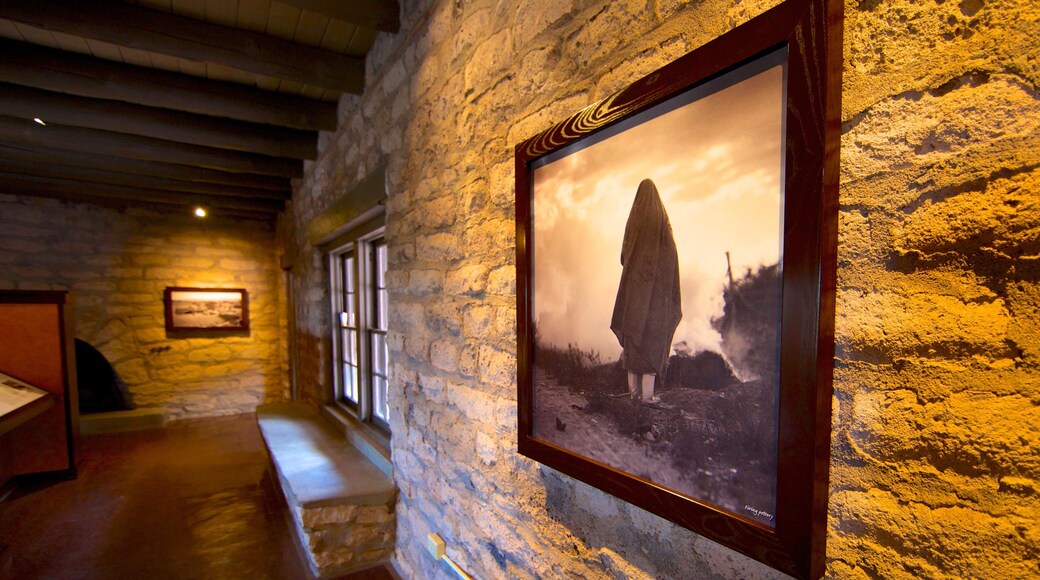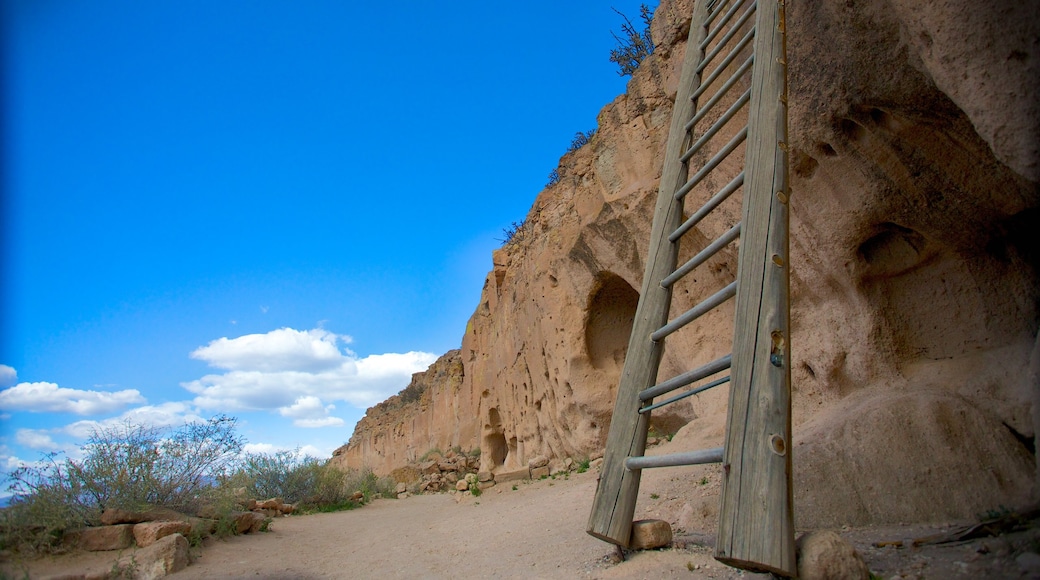The abandoned ruins of Puye Cliff Dwellings showcase the fascinating living conditions of Pueblo Indians who settled the Rio Grande Valley region between 900 and 1580. These cliffs comprise the largest complex on the Pajarito Plateau with hundreds of homes carved into the mountains and built on the surface. The villagers who farmed, hunted and lived in this arid valley are direct descendants of the Santa Clara peoples who now live several miles east of the area.
The site has two levels of cliff dwellings. Explore the lower level, which runs parallel to the base of the mesa for about 1 mile (1.6 kilometres). The upper level is far shorter. Climb the stairs and paths connecting the two layers. Take a tour with a docent who describes the history of the former settlers. Many guides are descendants of the Pueblo Indians who discuss contemporary social issues.
See the large central plaza in the midst of the cave dwellings. Note remnants of pottery and tools scattered on the floor around the site. Capture photos of the vista from atop the mesa. Explore the museum in the visitor centre to see tools and artifacts that belonged to the Pueblo Indians. You can purchase memorabilia from the site’s gift shop.
Villagers left the area after a severe drought toward the end of the 16th century. In 1907, the Puye Cliff Dwellings became the first site of archeological excavation in the Rio Grande Valley region. They have been designated as a National Historic Landmark since 1966.
If you don’t have a car, take the New Mexico Rail Runner north to the Puye Cliff Dwellings from South Capitol Station in Santa Fe. The journey is about 30 miles (48 kilometres) north of the city and takes around two hours since there is a stop in Los Alamos on the way. It is quicker to drive directly to the site, as that takes under 40 minutes.






